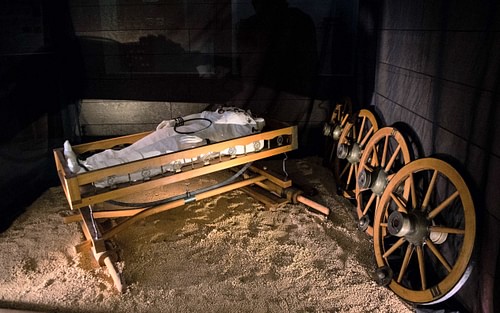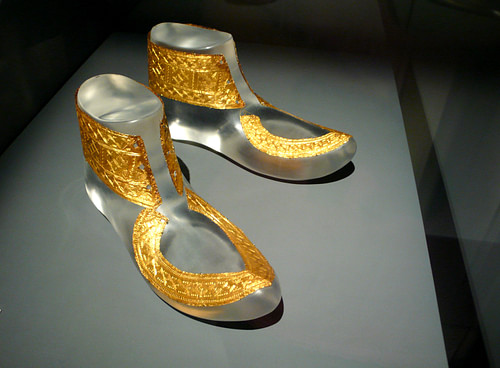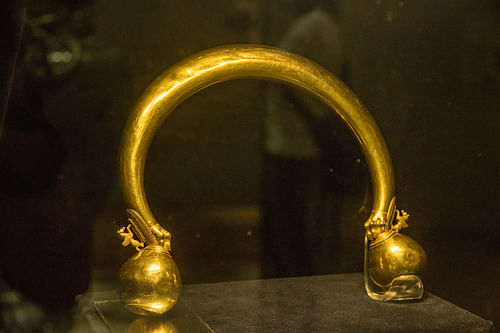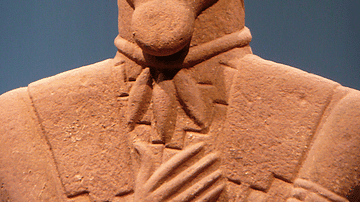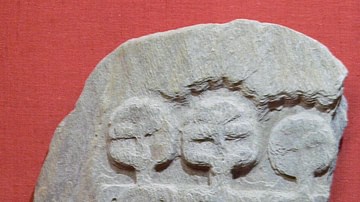The ancient Celts who occupied large parts of Europe from 700 BCE to 400 CE displayed a clear belief in an afterlife as evidenced in their treatment of the dead. In the absence of extensive written records by the Celts themselves, we are left to surmise their religious beliefs from secondhand classical authors. Fortunately, several important Celtic tombs like the Hochdorf and Vix burials have been discovered intact and examined in detail. The wealth of artefacts in these and other tombs have provided us with a unique insight into what the ancient Celts considered necessary to successfully send their loved ones on their journey to the Otherworld.
The Celts & the Afterlife
The Celts were the peoples who spoke the Celtic language and inhabited western and central Europe from the 1st millennium BCE to several centuries into the 1st millennium CE. The Celts themselves likely had no feeling of belonging to a European-wide culture, but one of several areas which did unite them was religious beliefs, even if these may have varied in details from region to region. The Celts have left very few written sources of their own and so study of their culture is restricted to archaeology and contemporary Greco-Roman writers. As the historian B. Cunliffe notes: "Celtic religion was not necessarily consistent across Europe, nor was it unchanging…Yet behind this variety, broad structural similarities can be detected" (273-4).
In the ancient Celtic religion, there was a belief in an afterlife in the Otherworld which was perhaps considered like this life but without all the negative elements like disease, pain, and sorrow. In this sense, there was little to fear from death when one’s soul departed one’s physical body, or more specifically for the Celts, one’s head. Prayers were said by the living to the Celtic gods, and food, weapons, and precious goods ritually offered to them. Sacrifices - animal and human - were also offered to the gods in ceremonies presided over by druids, the religious leaders of Celtic communities. There may, too, have been a belief that the soul left the body only to reappear in another after death.
That humanity was in some way controlled or guided by gods is, then, evidenced in Celtic religious practices, and the presence of amulets in tombs further suggests the deceased still needed some form of protection even if they had now left this life. Indeed, Celtic tombs and burial sites very often contain a whole range of objects, from tools to jewellery, which indicate the deceased was going on a journey and that they would need these items when they reached their ultimate destination. Where exactly this destination was and what it consisted of is not known in any detail, even if in medieval Celtic literature in Britain and Ireland stories abound of heroes visiting the Otherworld where it is regarded as a land of order, happiness, and plenty.
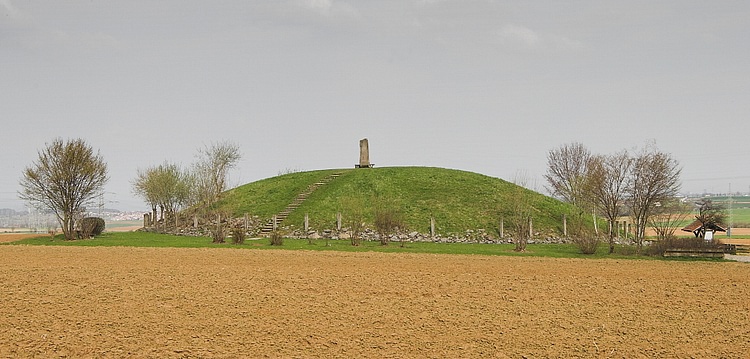
Cremations & Burials
The deceased were treated in different ways. An alternative to burial in a tomb was cremation which became more prevalent from the 2nd century BCE onwards, likely following contact with Mediterranean cultures although the precise reason why this change occurred is not known. A third method, particularly prevalent in Britain, was excarnation, where the corpse was left exposed to the elements for a period and the bones then either buried or kept for future religious ceremonies. As one might expect, very few traces of the latter two of these methods remain in the archaeological record, although sometimes cremated remains were themselves buried. An example of the latter is a 1st-century BCE burial chamber in Hertfordshire in southeast England where the deceased was cremated while wrapped in a bearskin. The remains were then deposited in a chamber along with paraphernalia for drinking and feasting, including five large Roman amphorae. Nevertheless, it is to burial mounds that we must look for the greatest number of clues on Celtic cultural practices regarding their dead.
Burials display a marked evolution over time but also differed as to when these changes occurred according to region. Internment in large burial mounds, at least for the community’s elite, was replaced by burial in flat graves. Burials in mounds could be for a single individual or have other occupants added later over time. Several mounds have been discovered in close proximity to each other at major Celtic settlements. According to Julius Caesar (l. 100-44 BCE) in his Gallic Wars, the Celtic Gauls also executed and buried the slaves and attendants of leaders who had died, although he states this practice had already been abandoned by the 1st century BCE. Archaeological excavations of some princely Celtic tombs have confirmed this may well have been the case.
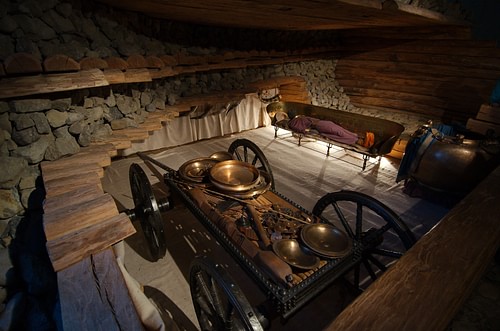
Preparing for the Otherworld
Burials such as those of great warriors and rulers saw individuals interred along with a large number of their daily possessions. Typical objects found in this context include weapons, armour, precious items like gold jewellery, and even large objects like chariots and four-wheeled waggons. Other daily items buried with the dead include tools, extra clothing, grooming equipment, oil lamps, and gaming counters.
One particular category of objects regularly found in Celtic burials is equipment for feasting. Celtic feasts were held to celebrate religious festivals, community events and successes, marriages, and victories in war. The paraphernalia needed for these eating and drinking extravaganzas included spits, cauldrons, wine flagons, mixing vessels, dishes, drinking horns, goblets, and communal tankards. Some of the objects are very finely made, well-decorated, and even imported from neighbouring cultures. Curiously, these feasting objects found in tombs are often in pairs, even if there is only one occupant of the tomb. Perhaps the extras were in anticipation of meeting loved ones in the Otherworld or symbolised the importance of offering hospitality, wherever the deceased ended up. The vessels for food and drink often have residues indicating they were once filled with foodstuffs. There may even have been a ritual feast attended by the deceased’s family and friends before the tomb was definitively closed within a wooden chamber and buried deep within a large mound of earth.
The burial custom seems to have been to place the deceased in a position of repose, often placed on or near a waggon. These waggons typically have four wheels and were designed to move slowly in a fixed direction. An alternative to a waggon is a metal or wooden couch for the deceased. The deceased is clothed with items which may have been given extra decoration, often using thin pieces of gold. Additional clothing may also be hung or spread around the burial chamber. The deceased often wears jewellery such as a neck torc, bracelets, and brooches. A grave in Baden-Württemberg in Germany, which dates to 400-300 BCE, revealed the deceased was wearing an item of clothing pinned together using three pairs of brooches of various designs.

Early Celtic graves have a range of particularly well-made, costly, and rare goods buried with the dead, a case perhaps of conspicuous consumption and designed to show the wealth and power of the deceased and, more importantly, those who honoured their passing and possibly inherited their title and power. Two burials, in particular, are deliciously informative as to how the ancient Celts viewed both death and the afterlife.
The Hochdorf Burial
The Hochdorf princely burial is located near Baden-Württemberg in southwest Germany and dates to the second half of the 6th century BCE. Once part of a burial mound since levelled and reconstructed, the tomb itself was undisturbed when excavated. The wooden walls of the chamber room were made of oak logs, each wall measuring around 4.7 metres (15.4 ft) in length.
Excavations revealed a single male occupant who was around 40 years of age when he died. He had been placed on top of a couch made of sheet bronze which measures an impressive 2.75 metres (9 ft) in length. The couch has small wheels below six of its eight legs - which are cast in the form of dancing girls - and is decorated with battle scenes and chariots. Also on the couch were furs, badger skins, and an assortment of twigs, feathers, and flowers. There was a cushion made of plaited grass below the deceased’s head. Clearly, if the occupant was about to embark on a journey, he was to do so in comfort.
There was, too, a four-wheeled waggon complete with harnesses. Also present, presumably the personal items of the occupant, were a conical hat made of birchbark, a quiver of arrows, and hooks for fishing. Curiously, clothes had been laid out on the floor and hung from hooks on the walls. In another nod to his requirements in the Otherworld, the deceased was wearing around his neck a small bag containing a comb, razor, and nail clippers.
Precious goods include gold additions to the man’s clothing and leather boots, which, following analysis, were added within the tomb itself. Other fine goods are drinking vessels, dishes, and a massive bronze cauldron with lion decorations. The cauldron’s capacity is an impressive 500 litres (110 gallons). The cauldron is of Mediterranean origin and illustrates the trade then going on between Celts and neighbouring cultures. Examination of residue within the cauldron revealed it was once filled with mead, a honey-beer, with added ingredients which included jasmine and thyme. In an indication this was meant to be drunk at some point by the deceased, a gold cup was left sitting on the rim of the cauldron. The man wore a gold bracelet and a gold necklace, with another necklace made from amber beads. A life-size sandstone sculpture of a warrior was found nearby, and he wears the same type of hat as found in the tomb. The stone figure perhaps once stood guard over the princely tomb and may even have represented its occupant.
The Vix Burial
The Vix burial is located near Châtillon-sur-Seine in northeast France close to a fortified Celtic site or oppidum and in the vicinity of at least four more burials. Discovered undisturbed, the princely burial dates to the late 6th or early 5th century BCE. The skeleton of the single occupant of the tomb, set within a wood-lined chamber, was in very poor condition but was likely that of a female aged around 35.
Artefacts in the tomb include a four-wheeled waggon. The corpse had been placed on the waggon which had been partially dismantled and its wheels placed against the wall. The floor of the tomb displayed traces of pigments, which may have come from items of clothing long-since destroyed by time.
A number of drinking vessels present included two Greek kylixes (shallow cups for wine), Etruscan bowls, and a Mediterranean bronze mixing vessel. The latter item, known as the Vix Krater, measures 1.64 metres (5.4 ft) in height and has a capacity of 1100 litres (242 gallons), making it the largest example of its kind to survive from antiquity. It was assembled from pieces in a workshop, each piece having been given Greek lettering to help the assembler. The krater is decorated with magnificent reliefs of hoplites and chariots around the neck and heads of Medusa on the handles. The krater has a lid, which was used to filter out spices and herbs placed in the wine before it was to be mixed with water. As in the Hochdorf tomb, a cup had been carefully balanced on its edge, as if in readiness for use. In fact, here there were four cups of various styles placed on the rim.
Jewellery items included a large gold neck-ring or torc with bulbous terminals and which weighs almost half a kilogram (1.1 lb). The torc is a complex work and is composed of 20 separate pieces joined by a master craftworker who was familiar with the sophisticated goldsmith techniques then being used in the Mediterranean cultures far to the south. The deceased was also wearing a necklace made of amber and stone beads, ankle rings made of bronze, bracelets made from lignite, and a brooch with coral decoration. All of these items together illustrate that whoever this woman was, the ancient Celts were prepared to dedicate a great deal of time and wealth to her burial, suggesting she was a person of significant importance in the community in which she had lived.
